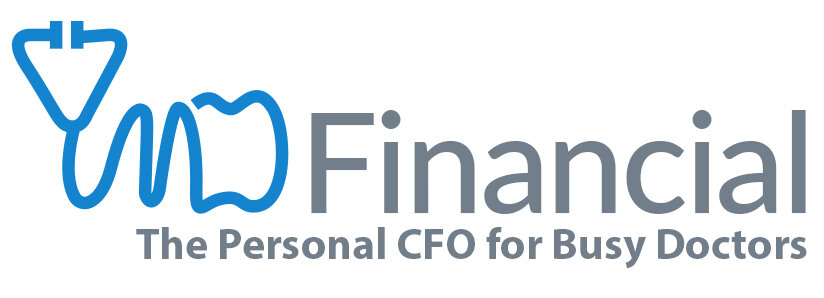By Katherine Vessenes, JD, CFP®
Welcome back to More Money Minutes for Doctors. Today we delve into a crucial topic: determining the minimum effective financial dosage for doctors to achieve lasting financial security.
In the realm of financial advice, countless articles offer tips for enhancing your finances. However, just as doctors prescribe the minimum effective dose for patients, should there not be a similar approach for doctors managing their finances? When it comes to Rich Doc. Broke Doc., mastering the minimum effective dose can make it easier and less painful to becoming a Rich Doc. Let’s explore this concept.
Defining the Minimum Effective Dose: A Practical Approach
Let's assume you, a doctor, take home around $20,000 a month or $240,000 a year after taxes, retirement plans, and deductions. For young doctors, we propose a minimal effective dose of 20%. What does this mean? Allocate 20% of your take-home pay to savings and investments. If you’re older and haven’t started saving much yet, this percentage should be higher.
To illustrate, let's examine a few case studies.
Case Study #1: Doctor Jane's Journey to Financial Wellness
Meet Doctor Jane, a 35-year-old with significant debt. Her 20% (which amounts to $4,000 per month) is strategically divided into three places:
- $1,000 into an emergency fund (totaling ~3-5 months of fixed living expenses)
- $1,500 high-interest debt repayment (in addition to regular monthly payments)
- $1,500 into long-term savings
Once the emergency fund and high-interest debt are paid, she can shift more into long-term savings!
Case Study #2: Doctor James - A Prudent Approach
Doctor James, having no high-interest debt and an emergency fund, allocates his entire $4,000 to long-term savings. Once his take-home pay increases, we can increase his monthly savings amount beyond $4,000.
Case Study #3: Doctor Al's Unique Situation
Doctor Al, aged 50 with minimal retirement savings and health challenges, should consider a higher percentage, perhaps 30% ($6,000). Running the numbers becomes critical in this scenario. Analogous to Type 2 diabetes, Doctor Al seems to suffer from what we term "Type 2 financial disease."
Facing Type 2 Financial Disease: Planning for Retirement
This is a lifestyle illness–a preventable one, and delaying retirement planning can have severe consequences. We explore strategies to secure a comfortable retirement, especially for those approaching their 50s and 60s. There are a number of factors that go into this:
- Reducing expenses
- Working part-time in retirement
- Moving to a low income-tax state
- And more
Your Prescription for Financial Freedom
In conclusion, once you determine your minimum effective financial dose, you gain the freedom to allocate the rest as you wish. Whether it's a trip to Aruba or upgrading your furniture; paying yourself first sets the stage for financial peace.
Listen on Apple Podcast, Google Podcast, Amazon Music, or Spotify.
CONTACT US
1-888-256-6855
Remember that you can send us any questions at: Info@MDFinancialAdvisors.com
Katherine Vessenes, JD, CFP®, is the founder and CEO of MD Financial Advisors who serve 600 doctors from Hawaii to New York. An experienced Financial Advisor, Attorney, Certified Financial Planner®, author and speaker, she is devoted to bringing ethical advice to physicians and dentists. She can be reached at Katherine@mdfinancialadvisors.com.
The views expressed are those of the author as of the date noted, are subject to change based on market and other various conditions. Material discussed is meant to provide general information and it is not to be construed as specific investment, tax, or legal advice. Keep in mind that current and historical facts may not be indicative of future results. The information contained in our presentations has been compiled from third-party sources and is believed to be reliable; however, accuracy is not guaranteed.

![Mastering the Minimum Effective Financial Dosage for Doctors [Podcast]](https://images.squarespace-cdn.com/content/v1/561feb4ee4b0de0eb30d6d3c/1706895186221-882KG3YC6GIHVNTJGYAG/towfiqu-barbhuiya-w8p9cQDLX7I-unsplash.jpg)
